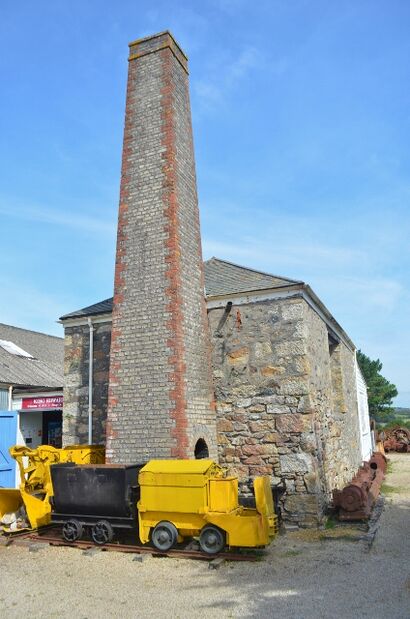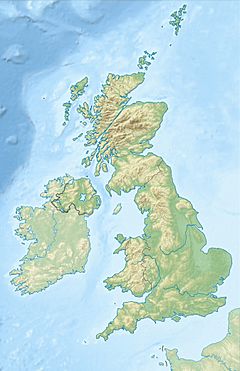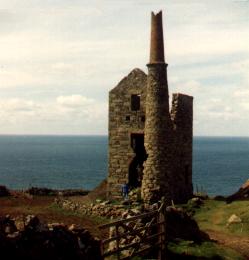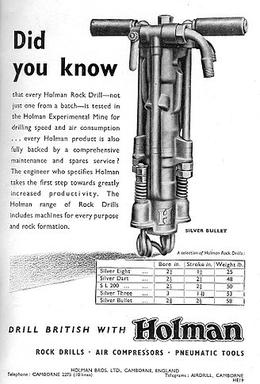King Edward Mine facts for kids
 |
|
| Location | United Kingdom |
|---|---|
| Coordinates | 50°12′14″N 5°16′16″W / 50.204°N 5.271°W |
| Website | www |
The King Edward Mine is a historic mine located in Camborne, Cornwall, in the United Kingdom. It is owned by Cornwall Council. This mine was once a special training ground for students learning about mining.
Back in the late 1800s, students at the Camborne School of Mines needed more hands-on experience. The local tin mines were getting old and not using the newest technology. So, the school decided to get its own underground mine for teaching.
Contents
History of King Edward Mine
Starting with South Condurrow Mine
In 1897, the Camborne School of Mines took over an old part of the South Condurrow Mine. This area had two important mineral veins, William's Lode and the Great Flat Lode. Students could explore these veins up to 400 feet deep. The mine didn't need water pumps because water naturally drained into the nearby Grenville mine.
Between 1897 and 1906, the mine was updated with the best mining tools and methods of the time. They fixed up the main shafts and cleared the underground tunnels. New buildings were added, including a modern plant for processing tin, a survey office, workshops, and classrooms. The old offices and changing rooms were kept.
The mine also produced tin regularly, acting like a small business. About 10 to 20 workers were employed, plus the college teachers. Students did a lot of the actual mining work. In 1901, the mine was officially renamed King Edward Mine.
New Ways to Process Tin
Many Cornish mines were slow to use new machines for processing ore because they didn't have much money. Most old processing plants just let the crushed rock settle in long channels. Workers then had to dig out the material for final treatment, which took a lot of effort and wasn't very good at getting all the tin.
Dolcoath Mine was one of the most advanced mines in Cornwall. They started using new machines called Californian stamps around 1892. Later, they added vanners and shaking tables around 1898. The mill at King Edward Mine was one of the first in Cornwall designed to use these modern machines from the start.
Moving to Great Condurrow Mine
The Great Condurrow Mine (also known as Pendarves United) stopped working in July 1881. After World War I, in 1921, many mines closed, including Wheal Grenville. This caused King Edward Mine to flood. Because of the flooding, mining lessons moved to a smaller part of the nearby Great Condurrow Mine. This section was higher up and didn't flood.
Over the years, as mining education became more focused on technology, the old tin processing machines were replaced with smaller, test-sized equipment. In 1974, this test equipment was moved to the new Camborne School of Mines campus in Pool. The original mill buildings at King Edward Mine, including the mill, stamps, engine house, boiler house, and calciner, were mostly empty and no longer needed for teaching.
King Edward Mine as a Museum
In 1987, a group of people decided to turn the old mill buildings into a museum. Their goals were:
- To protect the buildings and the site, which are very important historically.
- To put the mill back into working order using old equipment that had been saved.
- To create a small museum that tells the story of King Edward Mine, the local "Flat Lode" mining area, and how tin was processed.
- To save and protect old industrial machines from Cornish industries.
With help from the School of Mines, volunteers spent over 10,000 hours on the project. Many items and machines were given or loaned to the museum. The mill is now mostly working again, looking much like it did in the early 1900s.
King Edward Mine is the oldest complete mining site still standing in Cornwall. Even though it was built for teaching, it shows how a top Cornish mine would have looked and worked around 1900. Because of its importance, English Heritage has given the entire site a special Grade II* listing.
The Trevithick Trust and Cornwall Council
In 2000, the Trevithick Trust leased the museum part of the site from the Camborne School of Mines. After big repairs, paid for by a European grant, the site opened to the public on April 28, 2002. The Trevithick Trust stopped operating in 2006, and by 2014, the site needed more care.
Cornwall Council then took over the site. A grant of £1.1 million from the National Lottery helped with much-needed repairs. They also added a café and turned some old buildings into spaces for businesses. The site reopened in April 2017, and work continues to keep it in good condition.
Today, visitors can see the newly fixed Engine shaft and a small museum in the old mill engine room. This museum shares the story of the site, mining methods, and tin processing. It also shows what life was like for the miners. A Cornish photographer named J.C. Burrow took many pictures of the mine as it was being built. These photos are now used in the museum displays. You can also take a guided tour of the mill. Here, you can see the Californian stamps that were put in place in 1901. They are the only full-sized set like this left in the UK and possibly in Europe. Many of the machines in the mill are shown working.
As of 2023, Cornwall Council still owns the site. Some of the workspaces are used by the Royal Geological Society of Cornwall and the Upstream Thinking project of Cornwall Wildlife Trust.
Other Buildings at the Mine
Some other buildings on the site are not currently open to the public. These include:
- The mine office, which is the only 'Count House' in Cornwall still used for its original purpose since the 1860s.
- The Survey Office, a unique timber-framed building. No other examples like it remain in Cornwall.
- The carpenters' shop, blacksmith's shop, vanning room, and the original miners' 'dry' (a place where miners could change and dry their clothes).
- The cobbled 'spalling' floor, which might be from around 1865. This floor was used when the mine mainly produced copper. It is one of the best examples left in Cornwall.
Special Events and Games
Annual Open Days
Until 2020, the mine held an annual open day to celebrate mining in Cornwall. This event usually happened the day after Camborne's Trevithick Day. For example, in 2009, it was held on April 26. The day included local brass bands, dancers, and demonstrations of vanning (a way to separate minerals). There were also displays of old tractors, cars, engines, model railways, and mine models.
International Mining Games
King Edward Mine is also the place where the International Mining Games are held when the competition comes to the UK. Students from the Camborne School of Mines train here before they go to competitions overseas.




